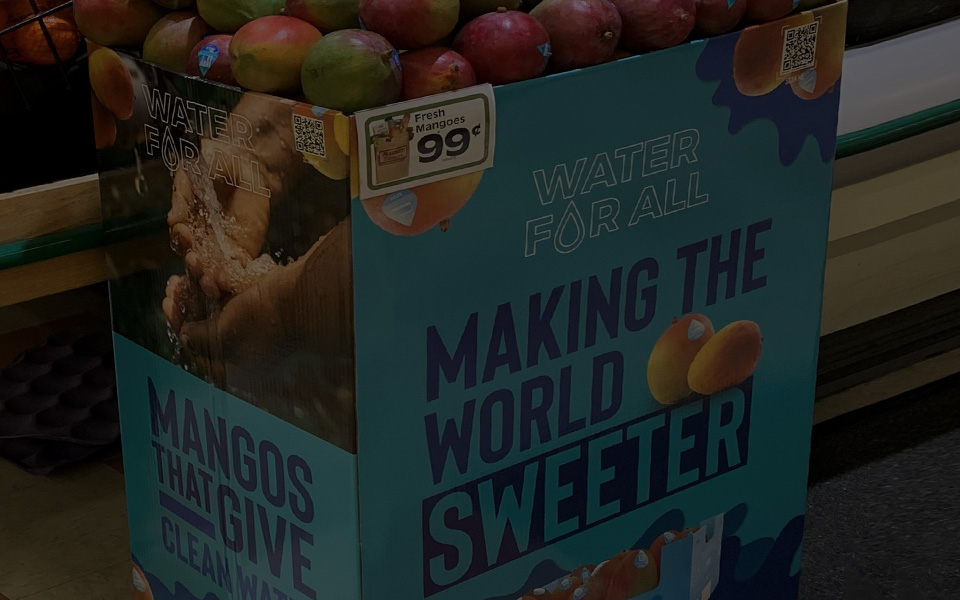*On June 1, 2023 Emerson’s Climate Technologies business became a new standalone company – Copeland. Though our name has changed, we are building on more than a century of HVACR innovation and industry leadership, and Copeland continues to offer the same products, industry stewardship, and learning opportunities you’ve grown to trust. Information found on this webpage posted before June 1, 2023 may contain our old name or branding, but you can be at ease knowing it was created with the knowledge and expertise of Copeland.
In an era where perishable food providers have become inundated with data from nearly every angle, many companies miss the opportunity to leverage it to their full advantage. As is often the case, operational data gets sorted into separate silos, creating a series of disconnected data streams that are largely underutilized on aggregate. In a recent article for Food Logistics, I explored how companies can transform this cold chain data into actionable insights with cloud-based software, advanced data analytics techniques and expert professional services.

Modern perishable food providers rely on data to support a wide variety of daily operational needs — from real-time tracking and monitoring of in-transit temperature to carrier delivery updates and cold storage facility statuses. Although this data is effective in serving discrete functions and reacting to issues as they emerge, most companies simply do not have the internal resources to consolidate these data streams, format them, and then present them in a unified view that could offer deeper insights.
Today, Copeland’s cold chain data management experts are addressing this industry-wide challenge. We’re combining real-time tracking devices, powerful software and expert services to help companies:
- Consolidate previously siloed data streams
- Leverage advanced data analytics techniques
- Transition to a more proactive cold chain management model
Uncover real-time and historical insights with Oversight
Copeland leverages its Oversight Cargo Services software platform to consolidate critical data streams into one unified view — an essential first step along the journey to proactive cold chain management. This step alone delivers multiple process improvements:
- Simplifying data entry by not having to log in to multiple systems
- Assigning shipment information to tracking devices to automate previously manual data entry
- Transitioning from a multiple-system model to utilizing a single-software platform
Once data is consolidated into one portal, Oversight can enable expanded real-time visibility, uncover historic trends, and deliver previously unavailable insights. For example, detailed reports and scorecards can pinpoint which carriers have transported goods at higher-than-expected or unacceptable temperature ranges.
By correlating various data points, operators can also detect patterns of loads being rejected when using specific carriers. This information allows providers to identify problematic carriers and proactively engage them to fix any temperature control or shipping issues that negatively impact food quality, such as:
- Which shipping lanes have repeated temperature excursions?
- Which cold storage coolers are not maintaining proper temperatures?
- Are there any distribution centers (DCs) that allow frequent temperature deviations?
- In which season or time of year are most excursions taking place?
Often, year-over-year seasonal analysis trends will reveal temperature spikes in perishable produce during the summer months. Robust cold chain management software allows operators to drill down, uncover the root causes of these issues, and make any necessary corrections or process improvements.
Supplement internal QA teams
In addition to lacking internal data analytics expertise, many companies simply do not have the necessary quality assurance (QA) staff to resolve myriad newly uncovered issues. As a leading provider of cold chain management services, Copeland offers the consultative expertise and professional support to fill these gaps and help companies to address their most pressing perishable supply chain issues.
For example, if Oversight detects that a carrier is experiencing an increase in produce temperatures during the summer months, producers can dispatch our experts to conduct a root cause investigation. By using Oversight’s robust reporting capabilities, we can evaluate specific shipments to help understand how and where temperatures are spiking. Possible areas of exploration include:
- Poor container insulation or refrigeration during the summer heat
- Improper produce pre-cooling procedures
- Flawed shipping processes
- Lack of temperature control at DCs
Because many producers are faced with evaluating tens of thousands of trips — and are more accustomed to handling individual, real-time issues — it’s understandable that they might need help exploring the root causes of larger trends. Not only can Copeland’s cold chain management professionals help to aggregate data and illuminate underlying issues, but they can also help to transform producers’ overarching processes and business procedures. And since these insights reside within software, much of this analysis can be performed remotely without requiring an on-site visit.
To learn more about Copeland’s Oversight Cargo Services software and cold chain data management services, please visit our information hub.

Six Ways to Reduce Food Waste by Tracking the Supply Chain
*On June 1, 2023 Emerson’s Climate Technologies business became a new standalone company –...

Protect Valuable Shipments in High-Crime Areas
*On June 1, 2023 Emerson’s Climate Technologies business became a new standalone company –...

Real-time Tracking Protects Valuable Mango Cargo
*On June 1, 2023 Emerson’s Climate Technologies business became a new standalone company –...
